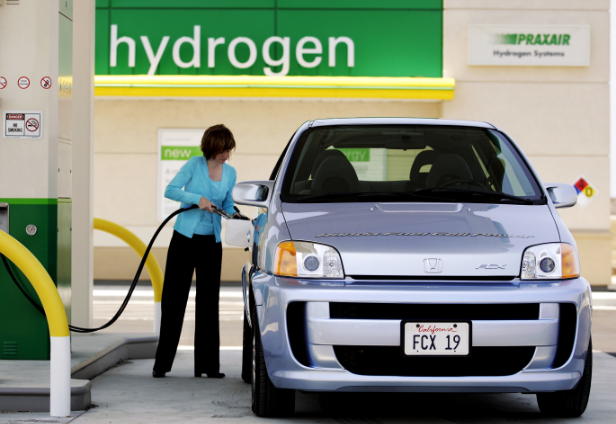An inexpensive combination of two metals common in the manufacture of computer chips can generate hydrogen from water, using only sunlight as an energy source. If the process can be made commercially viable — and the simplicity and cost suggests it might — it would mean yet another way to produce energy directly from sunlight, and a potential source of hydrogen for the kind of fuel cells that power both buildings and vehicles.
Everyone said it couldn't be done, that it didn't have the "right arrangement of electrons," but scientists at the University of Kentucky and the University of Louisville proved them wrong. They combined antimony (Sb) and gallium nitride (GaN) after a sophisticated computer model suggested the alloy of the two substances could work, even though previous experience suggested it wouldn't. (The alloy, sadly, is not baNGS. The computer didn’t sign off on that.)
Currently, hydrogen for commercial use is produced from fossil fuels such as natural gas, which defeats the purpose just a little. Producing it with sunlight could make it a viable compliment to traditional solar panels.
"Hydrogen production now involves a large amount of CO2 emissions," says Professor Mahendra Sunkara. "Once this alloy material is widely available, it could conceivably be used to make zero-emissions fuel for powering homes and cars and to heat homes."



